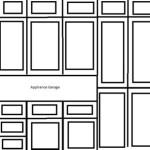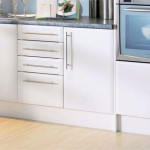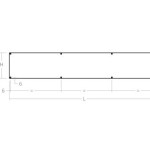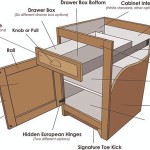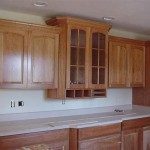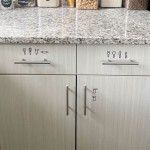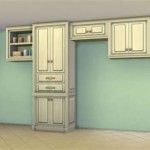Kitchen Pantry Storage Systems: Maximizing Space and Organization
The kitchen pantry is often the heart of the home, serving as a storage hub for a wide array of food items, snacks, and kitchen essentials. However, this space can easily become cluttered and disorganized, making it difficult to find what you need and leading to wasted food and a less efficient kitchen. Implementing effective kitchen pantry storage systems is crucial for maximizing space, optimizing organization, and ensuring easy access to your pantry's contents.
1. Assessing Your Needs and Space
Before embarking on any kitchen pantry organization project, it is essential to assess your specific needs and the available space. Consider the following:
- Inventory: Take stock of everything currently stored in your pantry. Identify frequently used items, seasonal items, and those you rarely use.
- Usage patterns: Evaluate how you access your pantry. Consider the frequency with which you use specific items and adjust your storage system accordingly.
- Pantry size and layout: Measure the available space in your pantry, including the height, width, and depth. This will help you determine the best organizational solutions for your specific dimensions.
- Budget: Establish a realistic budget for your pantry storage system. There are a variety of options available at different price points, ranging from DIY solutions to professional organizers.
Once you have a clear understanding of your needs and space, you can begin selecting the most appropriate storage systems.
2. Utilizing Vertical Space and Shelf Organization
One of the most effective ways to maximize space in your kitchen pantry is by utilizing vertical space. This can be achieved through a variety of methods:
- Adjustable shelves: Installing adjustable shelves allows you to customize the height of each shelf to accommodate different sized items. This maximizes vertical space and prevents items from getting lost in the back.
- Tiered shelves: Tiered shelves create additional levels within a single shelf, providing extra storage capacity for smaller items such as spices, jars, or cans. This can be particularly helpful in smaller pantries.
- Pull-out shelves: Pull-out shelves provide easy access to items stored at the back of the pantry. These are especially useful for heavy items or those you use less frequently, as they eliminate the need to reach or move other items.
- Stackable containers: Utilizing stackable containers is a simple and effective way to maximize vertical space while maintaining organization. Choose containers that are transparent to easily identify contents.
In addition to vertical space optimization, efficient shelf organization is crucial. Consider using dividers, trays, and baskets to separate items by category and prevent them from rolling around or getting mixed together.
3. Incorporating Functional Storage Solutions
Beyond shelves and containers, there are a variety of functional storage solutions that can enhance your pantry's organization and efficiency:
- Over-the-door organizers: These organizers are a great way to utilize often overlooked space on the back of your pantry door. They are ideal for storing smaller items like spices, condiments, or snacks.
- Slide-out drawers: Slide-out drawers are similar to pull-out shelves but designed for smaller items. They can be used for storing baking supplies, snacks, or frequently used items.
- Magnetic strips: Magnetic strips can be attached to the inside of the pantry door or a wall to store metal items like knives, scissors, or utensils.
- Spice racks: Spice racks can be mounted on the wall or inside the pantry door to keep spices organized and easily accessible.
- Wire shelving: Wire shelving provides an open and airy storage solution, making it easy to see everything at a glance. They are also great for air circulation and preventing moisture buildup.
When selecting storage solutions, consider the size and shape of your pantry, your budget, and the items you need to store.
4. Labeling and Categorizing for Easy Access
To ensure easy access and efficient organization, it is crucial to label and categorize your pantry items. This helps you quickly identify what you need and prevents unnecessary searching.
- Clear labels: Use clear and concise labels that are easy to read. Consider using different colors or fonts to categorize different types of items.
- Consistent labeling: Maintain consistent labeling across all items, ensuring consistency in your organization system.
- Categorization: Group similar items together to streamline access and make it easier to find what you need. Categories might include snacks, baking supplies, canned goods, cereals, etc.
By implementing a robust labeling and categorization system, you can significantly improve the efficiency of your kitchen pantry.

Pantry Shelving Organized Living

Pantry Shelving Organized Living

Kitchen Pantry Customclosetmaid
:strip_icc()/NEATLITTLENEST1-f37d50a35cbe4561a7e9be0a0221506f.jpg?strip=all)
20 Best Small Pantry Organization Ideas You Have To Try

Kitchen Storage Dream Doors Kitchens

Pantry Organization Ideas

Kitchen Pantry Customclosetmaid

Custom Closets And Storage Solutions For Your Kitchen Pantry

Custom Kitchen Pantry Storage Organization Ideas The Closet Works

Save Money In 2024 With These Home Organization Tips Knof Design Pantry Remodel Closet
Related Posts

